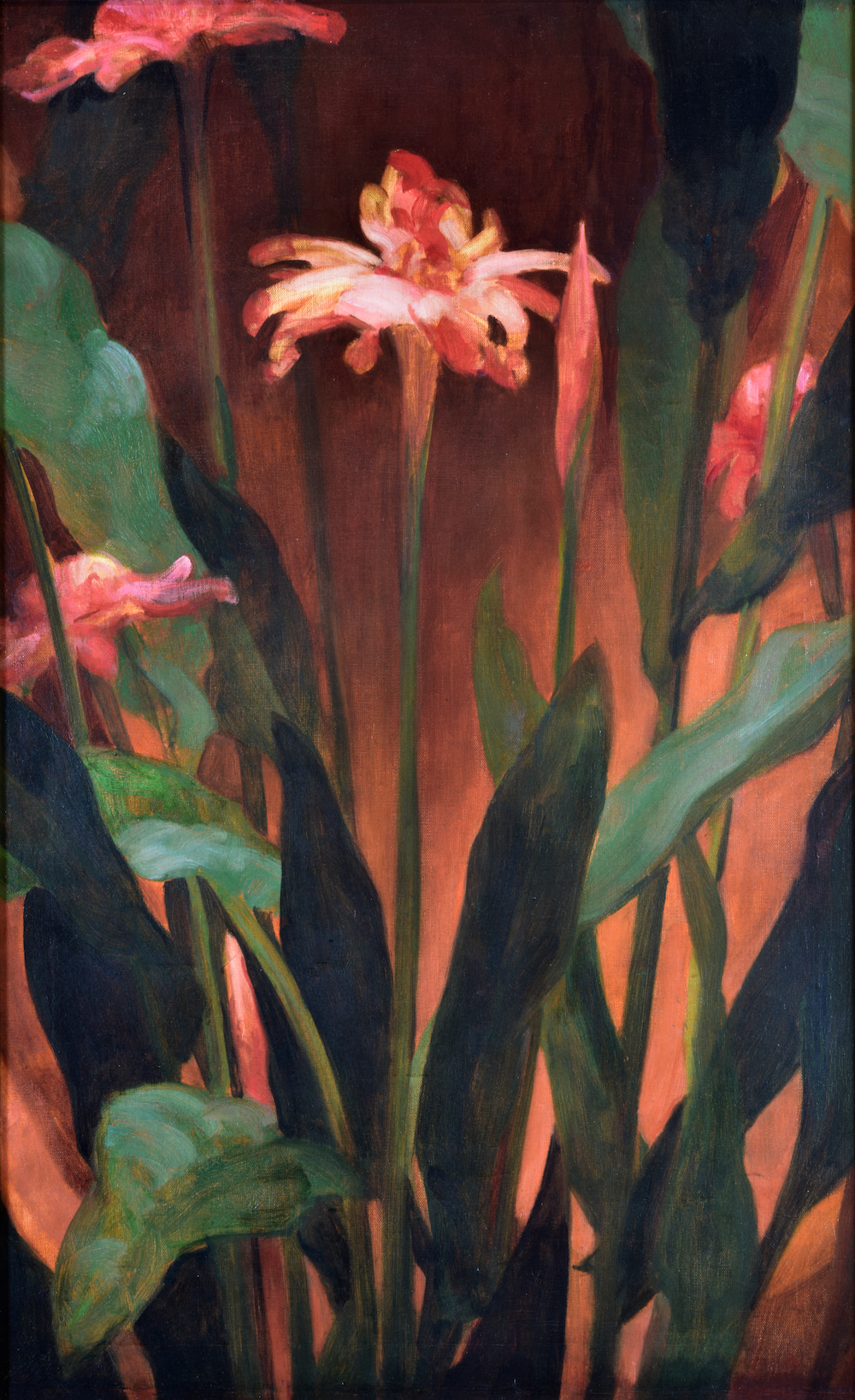Hawaiian Paintings
"To paint a landscape well, first lay bare its geological layers. Think how the history of this world dates from the day when two atoms came together or two chemical dances combined."
– Agnes Pelton
In 1923-1924, Pelton traveled to the tropical Island of Hawaii for an extended visit with relatives. This experience changed her concept of the universe and would influence both her realist and abstract paintings.
A believer in the transformative power of fire, Pelton captured the lava flows and the creation of new land in the volcanic eruption featured in Firepit of Kilauea Volcano, Island of Hawaii, 1924. She also depicted the island’s vitality of life in her painting of a ginger plant. According to late Pelton scholar Michael Zakian, Pelton later adapted the strong vertical or “portrait” format of Tall Ginger (1923-1924) in her early “nature-based” transcendental abstractions.
These two darker Hawaiian works are distinguished from her desert landscapes by Pelton’s use of a lighter color palette to depict the desert.

Tall Ginger, 1923-1925, oil on canvas, 46 1/4 × 32 1/4 inches. Private Collection, courtesy of Kelley Gallery, L2020.17.1.
According to the late Pelton scholar Michael Zakian, “Tall Ginger has the distinction of being Pelton’s first symmetrical composition. Once she began painting her original transcendental abstractions in the following years, this format was used in the best of them.” The vertical thrust Zakian describes can be seen in The Ray Scene, 1925, which Pelton identified as “My First Abstraction” and is currently on view in Agnes Pelton: Desert Transcendentalist.
